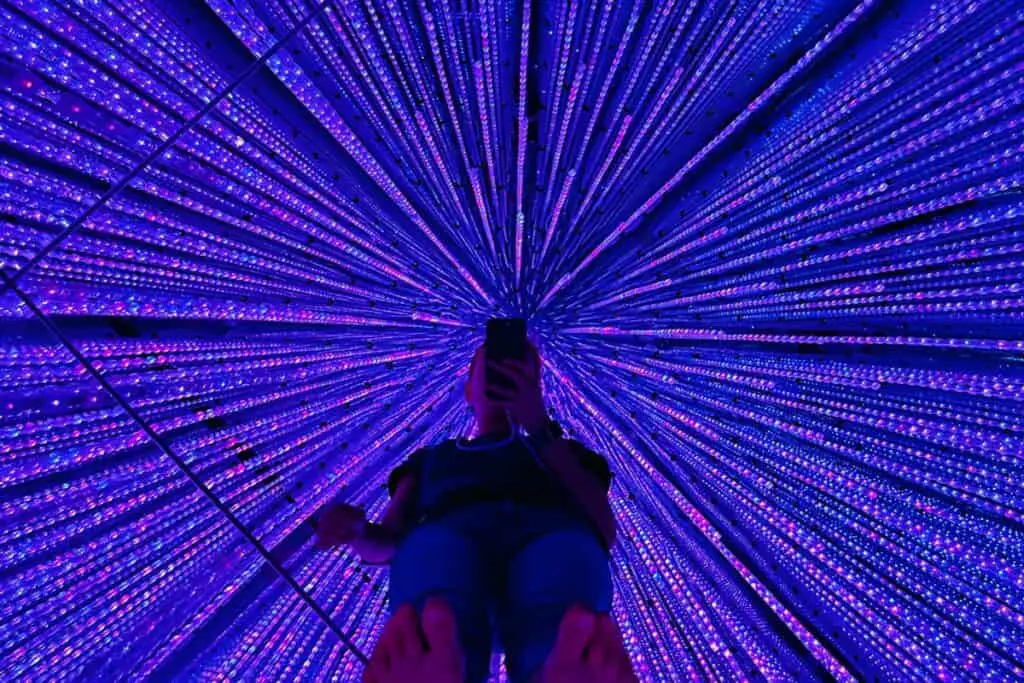
© Ana Costa
Hakone is a must-visit destination for the Japanese who are willing to take a break from the vibrant Tokyo. This relaxing place has many attractions, but sometimes foreign tourists don’t know if it is worth their time. I can understand this hesitation because there’s so much to see in Tokyo, Kyoto, Osaka, etc that people don’t know if they should give some time to Hakone. However, ignoring Hakone in your itinerary could be a mistake and certainly make you leave Japan with a little regret.
Hakone is a mountainous town known for its volcanic valley (Owakudani) and black eggs (Kurotamago), its amazing onsen (hot springs), the Hakone shrine, and its red torii floating in Lake Ashi. It’s worth a visit to experience pirate ships and ninja buses or enjoy Mount Fuji views from afar.
But Hakone is full of other incredible things to see and do. In the next paragraphs, I’ll show you the best things to see in Hakone, how much time you should spend and how to get there.
By the way, if you need the Hakone Free Pass to visit the Hakone area and save some money, without having to buy an individual ticket each time, you can get the Hakone Free Pass on klook.
What is Hakone known for?
Owakudani and the black eggs
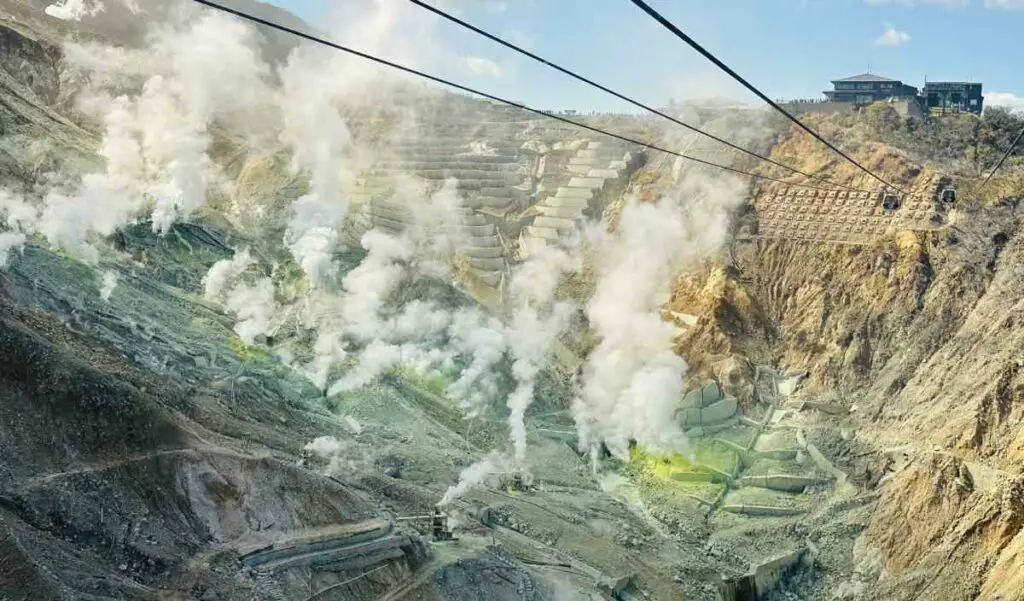
© Ana Costa
Owakudani is the volcanic valley in Hakone and it’s a huge attraction in the area. Here you can observe the volcanic activity of Hakone’s volcano and it sure is a particular sight. If you’re a fan of active volcanos, this place can be a great highlight of your travel. You can even see the volcanic gas emerging from the ground at several spots which is quite amazing especially if you’ve never seen it before.
The valley is also known for its black eggs (called kurotamago) which are said to add seven years to your life when you eat one. I don’t know if this is true or not, but it is certainly worth trying. By the way, the black eggs are just regular eggs that are boiled in a hot spring pond that contains iron and the shell turns black. It is safe to eat them, don’t worry about that, but you can only find these black eggs in Owakudani. They are not sold anywhere else.
Also remember that there’s real volcanic activity going on, so some areas and paths might be closed during higher activity. People with allergic asthma, respiratory diseases, heart diseases, or pacemakers shouldn’t visit this area, or they should stay in the car. Pregnant women and newborns or very small children should be careful too. Be aware that there’s a really strong smell of sulfur that comes from the volcanic gas.
Hey, check out these recommendations I have for you!
Before going any further, take a look at some of the recommendations I've handpicked for you. I think these are essential items you should have on your trip to Japan. You can check them out and buy them directly from Amazon.
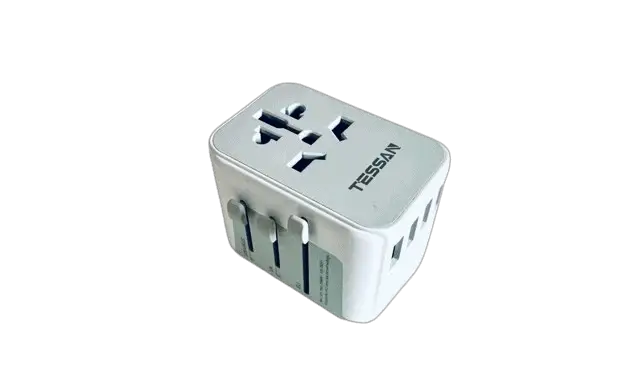
|

|

|
| A universal travel adapter | A 10,000 mAh power bank | A travel adapter and converter |
Link to the official page about black eggs >>
Hakone ropeway
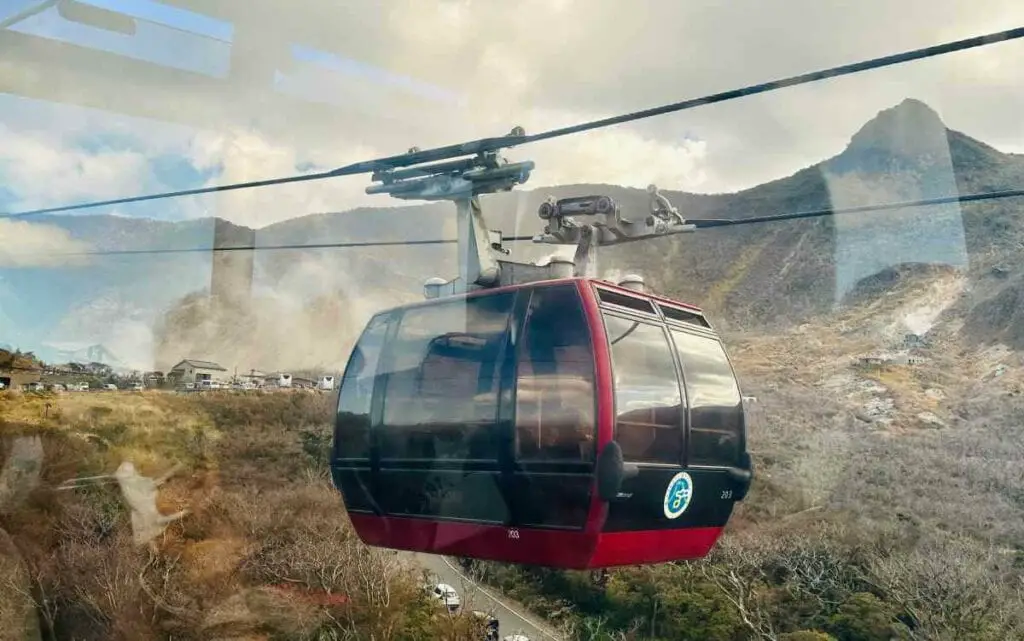
© Ana Costa
The Hakone ropeway takes you from Togendai Station all the way up to Owakudani Valley. More than just a means of transportation, it is actually a great option to have some sightseeing from above because the view is incredible. You start with beautiful views over Lake Ashi and the mountain and you end up over the mind-blowing Owakudani valley with all the gas everywhere. There’s no way you could get bored with this ride.
Please be careful because using the Hakone ropeway is not for everyone. Some people that are “at risk”, like I told you before, shouldn’t go on the Hakone ropeway.
Information about Hakone ropeway >>
Hot springs
Hakone is well-known for its incredible onsen (hot springs in English). The water quality is awesome and there are lots of public baths and private baths you can try. Usually, private baths are found in ryokan (traditional Japanese inns) and are mainly reserved for their guests. If you are thinking of staying at least one night in Hakone, a ryokan stay with a private bath is definitely a must. Private baths are better for people who don’t feel comfortable bathing in front of other people. (Yes, you don’t wear swimsuits in onsen and you’re naked in front of other people.
There’s actually a famous resort in Hakone that is like a hot spring theme park. It is called Yunessun Spa Resort and it has several attractions like outdoor baths, water slides, hot springs with scenic views, cave baths, foot baths with little fishes, baths with wine, coffee or sake, and much more. It is a great place to spend the day and have fun. At Yunessun Spa Resort, it is also possible to experience a traditional Japanese bath in a separate area. Just remember that swimsuits are not allowed in the traditional bath, and you must use them in all the other areas.
Japan’s waiting for you! Get your quick guide for the best trip.
Grab It Now
If you feel tempted by this kind of experience, you can check the price and buy your tickets for Yunessun Spa Resort from Klook.
Lake Ashi
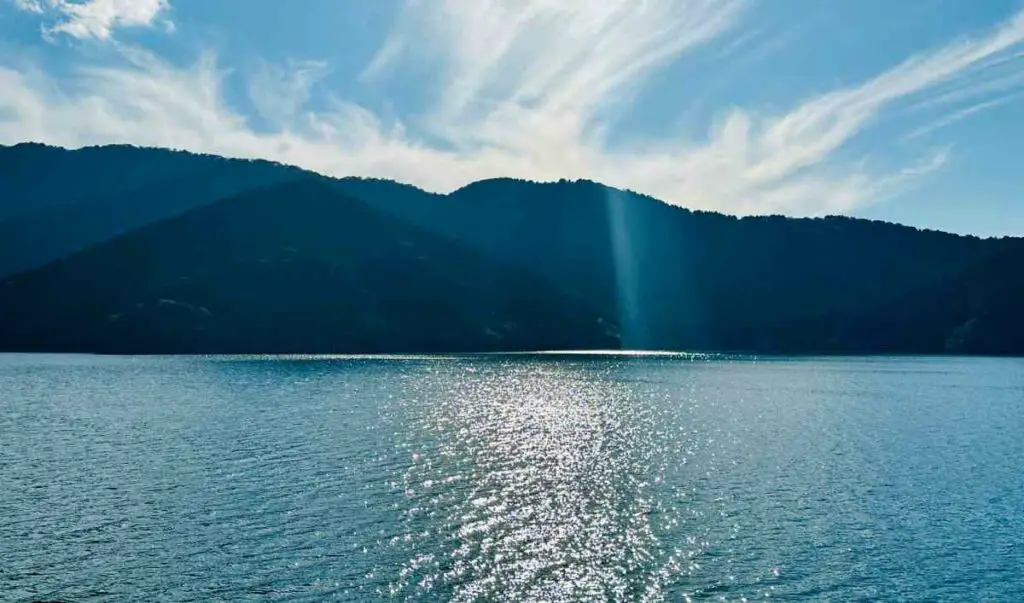
© Ana Costa
Lake Ashi is one of the scenic spots in Hakone with a view of Mount Fuji when the weather is clear, otherwise, the clouds will hide it. The lake was born about 3,000 years ago during an eruption of Mount Hakone.
It is possible to cross the lake thanks to several boats and some of them even propose original rides like the pirate ships or the ninja bus (yes, there’s a bus that goes into the water in Lake Ashi). If you plan on doing the Hakone Loop (a round course itinerary that allows you to see all the Hakone area), you will have the opportunity to cross Lake Ashi and see the scenic views of nature all around you. And maybe you’ll be lucky to see Mount Fuji on a clear day (the best time is during winter or early in the morning and late in the afternoon).
Pirate ships
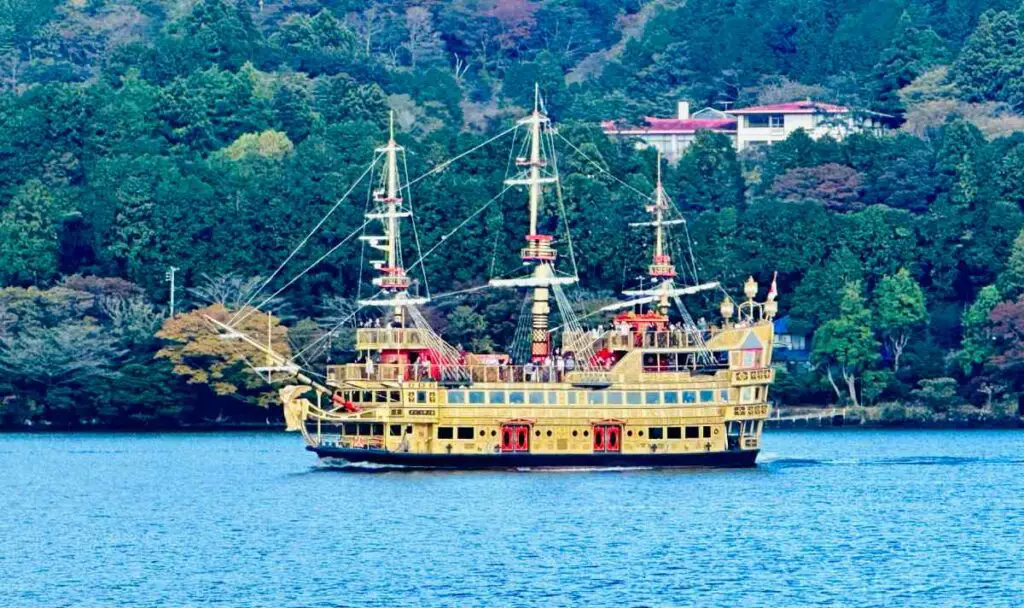
© Ana Costa
Pirate ships aren’t probably very “Japanese”, but they certainly are an attraction you will see in Hakone. There are three ships at the moment that take you on a cruise to the other end of Lake Ashi. The ride takes about 25 to 35 minutes one way and about 70 minutes if you take the round trip.
I don’t know about you, but I’ve never been on a pirate ship before, so this is actually a pretty cool experience. Plus, the ships are fantastic and well-decorated. At the moment you can choose between Royal II (a French-inspired ship), Victory (a British-inspired ship), and Queen Ashinoko (the most recent and the most beautiful of the three ships.
You also have the possibility to upgrade your ticket to use the special cabin which is absolutely amazing. It takes fewer people and the decoration is awesome.
For more detailed information on the ships click here >>
You may also like:
Is Mount Fuji Worth Seeing?
Is Nikko Worth Visiting?
Hakone Shrine and Torii
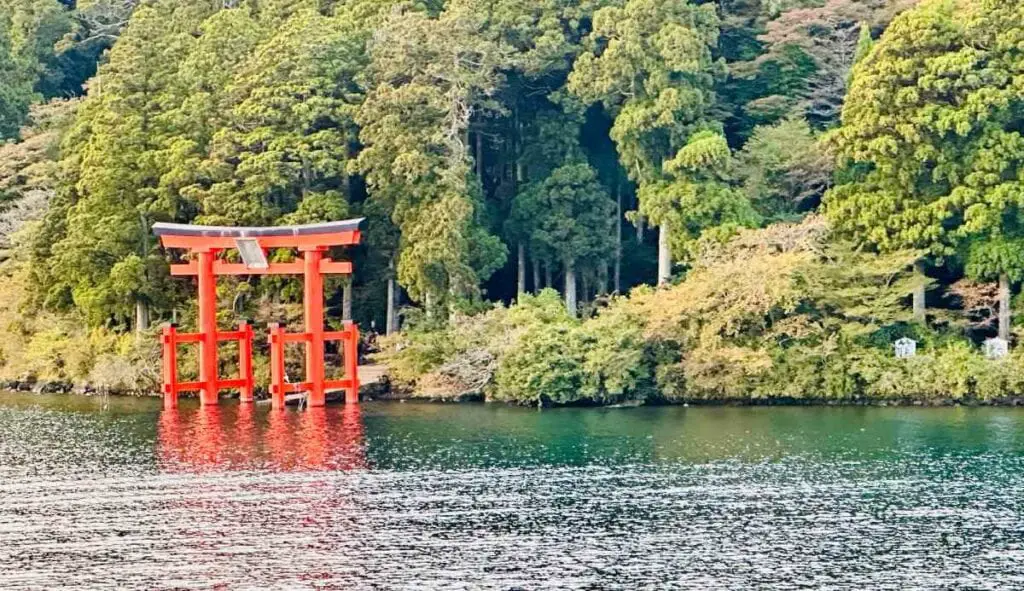
© Ana Costa
Hakone Shrine is a very beautiful shrine. The first thing that strikes visitors is the red gate (called torii) by the waters of Lake Ashi. There’s also a torii in the water on Miyajima island near Hiroshima, but if you’re not planning on going that far, this torii in Hakone is quite an incredible view. The only problem is that the Torii is overcrowded and you will have to line up for a long time to get the famous picture of the Torii.
Honestly, I didn’t have the patience, or time, to be waiting in a huge line just for one picture, so I decided to explore the shrine and the surroundings instead.
There’s an enchanted atmosphere all the way up to the shrine’s buildings in the mountain. Along the way up, you’ll see red lanterns on each side of the path, and on the top, you find the main hall, beautifully surrounded by nature. This shrine is really located in the mountains, so you’ll quickly notice the special atmosphere of the place.
On the shrine grounds, you’ll also find a famous “baby wishing tree” which is believed to help people have babies. Lots of people come to the Hakone shrine for this tree, so it might be nice to take a look at it too.
Hakone open-air museum
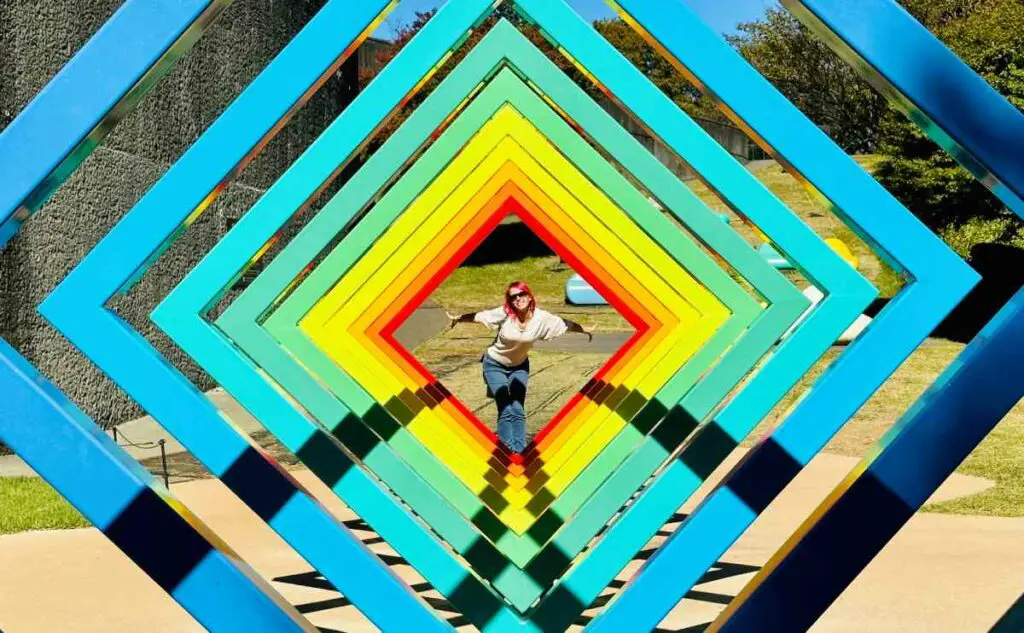
© Ana Costa
The Hakone Open Air Museum is known for its great sculptures in a natural setting and this is not something you’ll see every day. If you like modern art and nature then this place is for you. Plus, since the sculptures are outside, the views change with the seasons, therefore you won’t have the same experience in spring and autumn, for example.
There’s also a facility of artwork specially made for children where they can play. It’s called Woods of Net and it is an amazing idea because usually kids don’t like museums, but this one in Hakone has nothing to do with traditional museums for sure. My son loved so much the experience that he wanted to go back again.
More information at the Hakone Open Air Museum website >>
Ninja Bus
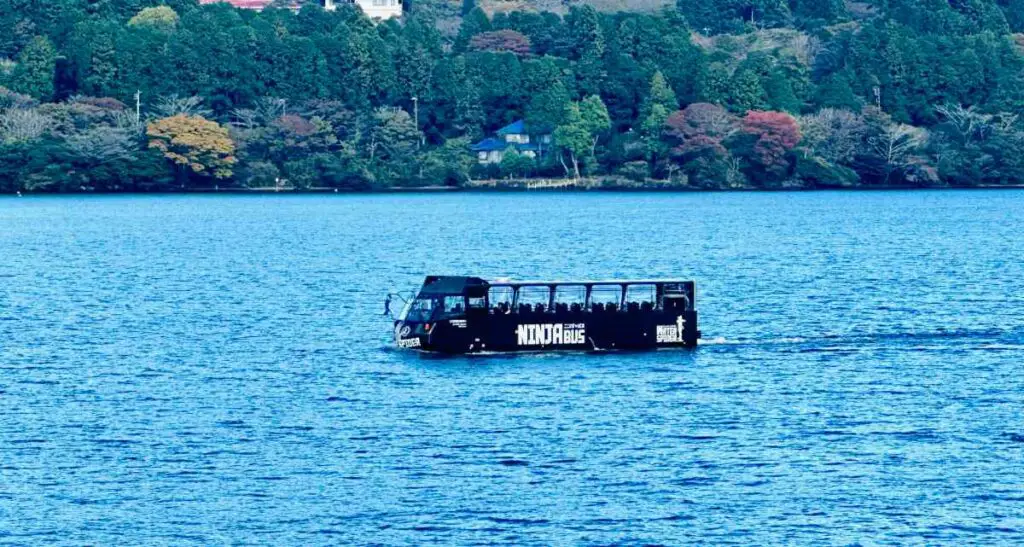
© Ana Costa
The Ninja Bus is not the most important thing in Hakone, but it is definitely a one-of-a-kind experience. The bus is called Water Spider which is actually the name of a ninja technique that allows you to walk on the water. Yes, you guessed that right, this is the bus that enters the waters of Lake Ashi.
There are several bus rides during the day, usually seven, and they start at 9.30 am. The last ride starts around 3.45 pm, so make sure you get there before to have a chance to try this bus “cruise”. The best part of this experience is definitely the moment when the bus leaves the road and enters the lake’s waters, splashing water everywhere. If you’re a fan of unusual experiences, you might give this bus a try.
Insider tips for your Japan trip. Quick, easy, and free!
I Want This
Since there are limited places on the bus (around 42 places per ride), you should get your ticket in advance and reserve your seat. Tickets for the Ninja Bus can be bought easily on klook, for example, when preparing your trip to Japan.
These are only a few known spots to see in Hakone, but there are many more to see and explore. When visiting Hakone, make sure to also take a look at the old Tokaido road, which is an ancient cedar avenue, the Hakone Venetian Glass Museum, or the Chisuji Falls.
Honestly, I think that Hakone is really worth the visit because there is so much to see and do that you can never be bored. There’s nature everywhere for a relaxing experience, but it is also combined with fun moments like the Owakudani Valley, the Yunessun Spa Resort, or the pirate ships.
How many days should I spend in Hakone?
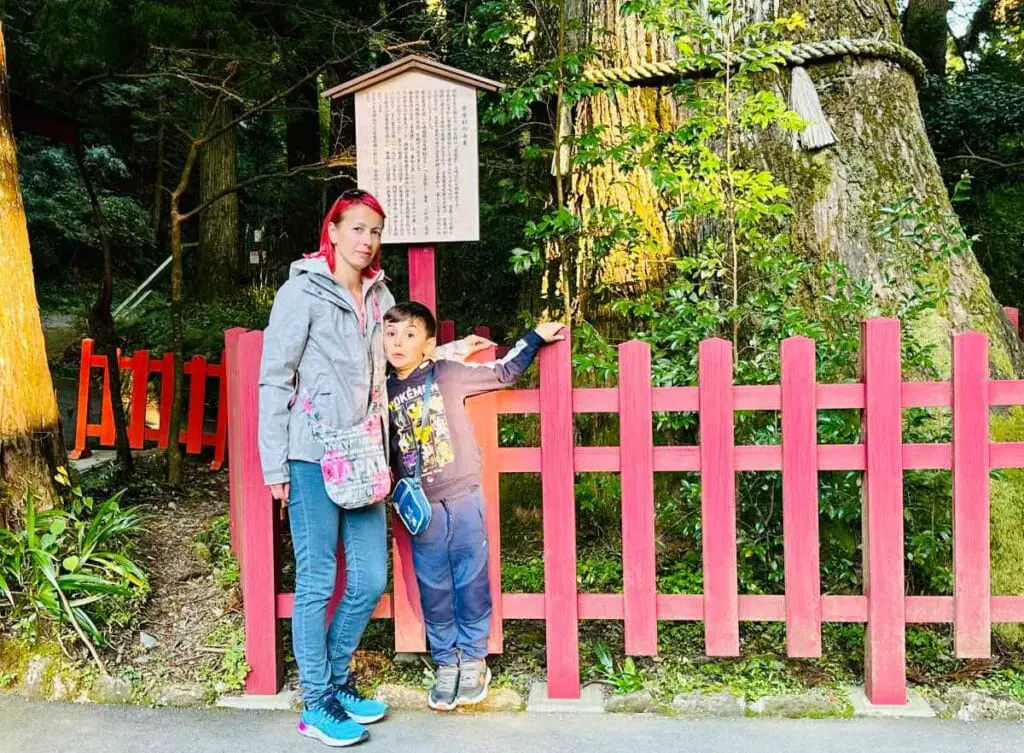
© Ana Costa
Hakone is at least a full-day trip from Tokyo because there are lots of things to see and do. I only listed some of the most important and interesting things to do, but there’s much more you can try and this takes a little time, obviously. On my first trip, I did a day trip and I feel that I missed out on lots of things (also, I had to rush at the end of the day).
Most tourists stay at least one night to experience a ryokan stay (traditional Japanese inn) with private baths while in Hakone. This is undeniably a great idea because then you have two days to explore Hakone at a more relaxed pace to discover the town’s beauty.
To visit most of the places above, you have to keep in mind that they close around 5 p.m., so you have to plan accordingly to get to see them before they close. Allow yourself some extra time at each place to fully enjoy the experience. It is probably better to see fewer things, but spend the right amount of time enjoying them, than to rush everywhere to see a maximum of things.
If you can stay two nights, it’s perfect, and there are a lot of tourists that do that. However, accommodation can get a little expensive in Hakone. A common workaround for this is staying in Odawara nearby which is generally cheaper. Odawara is about 4.5 miles (7.2 km) from Hakone, so you won’t lose much time in transportation.
Sometimes, tourists make a stop at Hakone on their way to Kyoto because the Shinkansen will stop at Odawara anyway. As you can see, it’s really simple to choose Hakone for a day trip, or for a longer stay, because of its location.
How do you get to Hakone from Tokyo?
There are a few ways to get to Hakone using public transportation.
If you bought a Japan Rail Pass for your trip, the best option is to take the Tokaido-Sanyo Shinkansen from Tokyo Station to Odawara Station, because it is faster and the ride is included in the pass, and then take the local train on Hakonetozan Line to Hakone-Yumoto Station. It will take you about one hour to get to Hakone-Yumoto from Tokyo Station.
If you don’t know what a Japan Rail Pass is or if it is worth it for your travel, you can use my Japan Rail Pass Calculator to know if your itinerary is worth the pass cost. And if you want to buy your Japan Rail Pass later, you can save this link from an official online seller (Klook).
For those who don’t want to buy the Japan Rail Pass, you can choose to travel using the Romancecar train from Shinjuku Station to Hakone-Yumoto Station. This ride is not included in the Japan Rail Pass, so you’ll have to pay around 2,300 yen each way and it takes about 1,5 hours.
There are also buses available, but it usually takes longer (around two hours). The only good point about buses is that the tickets cost less money, so you can save a little if you’re on a budget.


